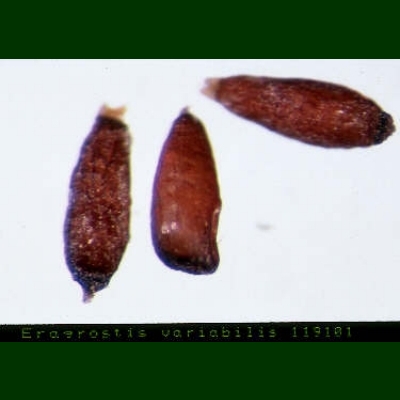 Hawaiian Name(s): kāwelu, ‘emoloa, kalamālō
Hawaiian Name(s): kāwelu, ‘emoloa, kalamālōScientific Name: Eragrostis variabilis
Vernacular Name: none
Family: Poaceae
Status: endemic
Authority: (Gaudich.) Steud.
Description:
Habitat
Medicines:
Non Medicinal Uses: Occasionally used as a substitute for pili grass thatch (Heteropogon contortus) (Krauss 1993:58). The waving of k$#257;welu grass in the breeze is said to be the inspiration of a swaying hula step (Neal 1965:64).
Specific gravity of wood: unknown
Famous Locations: Nu‘uanu pali, O‘ahu
Mele: "Ua maewa wale i ke oho o ke kāwelu" line in "Makalapua" (Elbert & Mahoe 1970).
`Ōlelo Noeau: Kāwelu holu o Lanihuli. The swaying grass of Lanihuli. Visitors to Nu‘uanu Pali know the kāwelu grass on the slope of the hill, dipping, rippling, and swaying in the breeze. It is mentioned in many chants and poems.
Dye Color and Parts:
Kino lau:
Location on Bishop Museum Kalihi Campus:
Propagation Information: Easy. From seed, transplant when about 5 cm tall, don't let them get root-bound in pots (Culliney and Koebele 1999:75–77).
Native Plants Hawaii.
Seed: Seed length approximately 1 mm. Photograph: H.Lennstrom.

